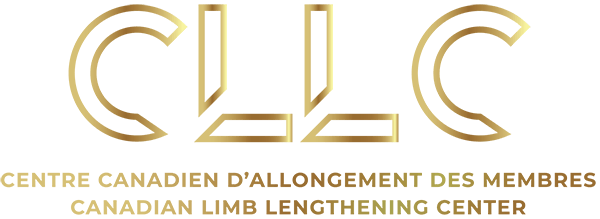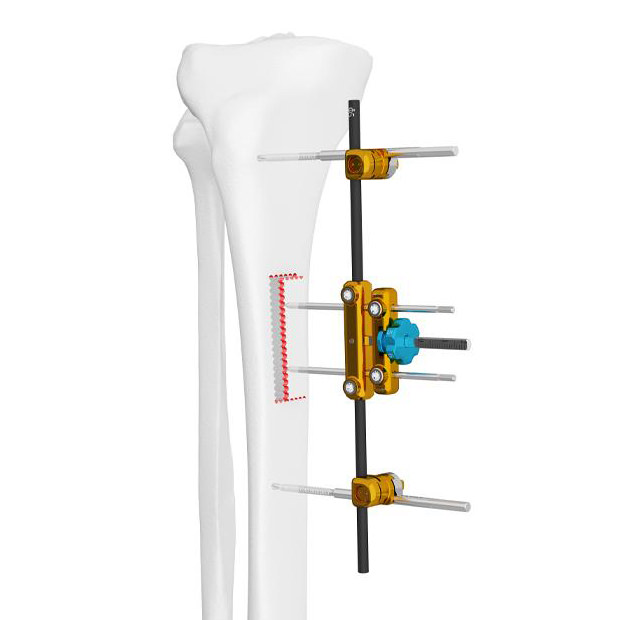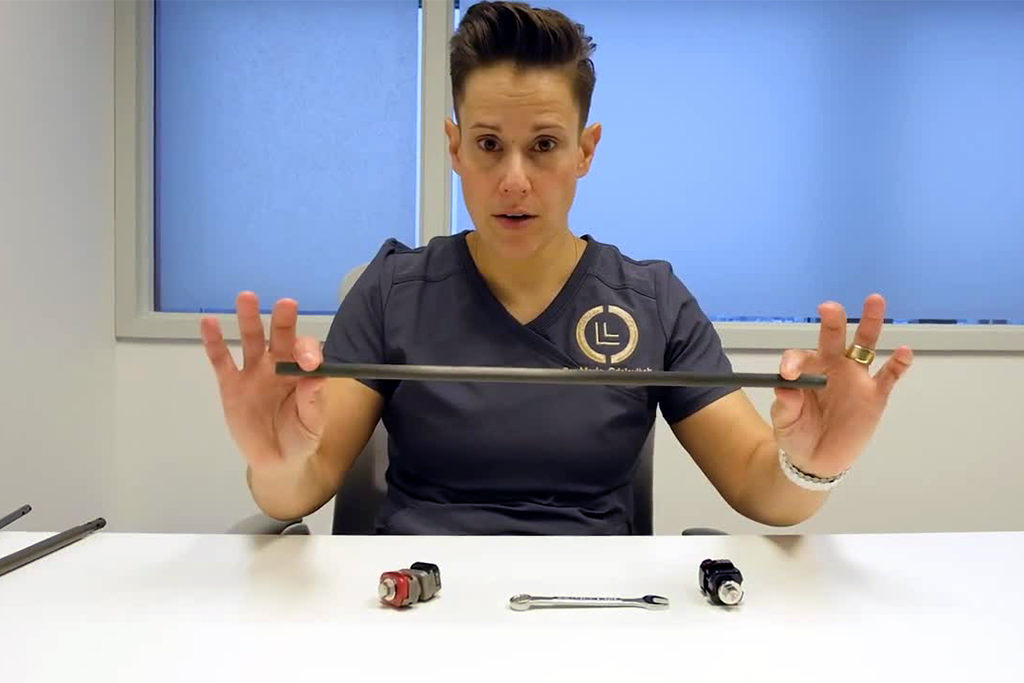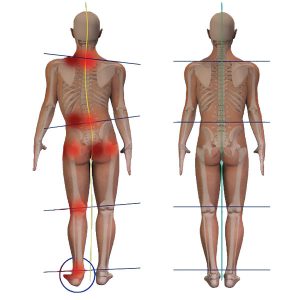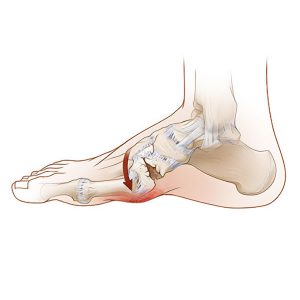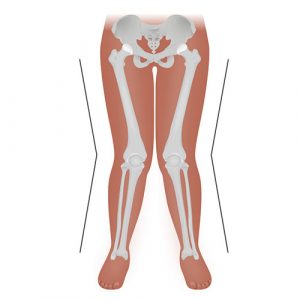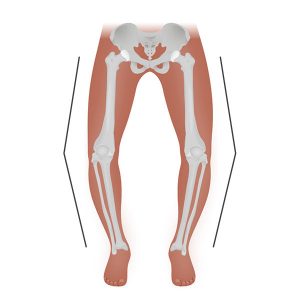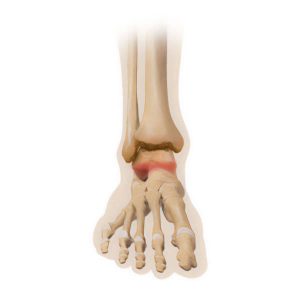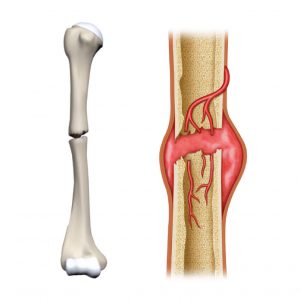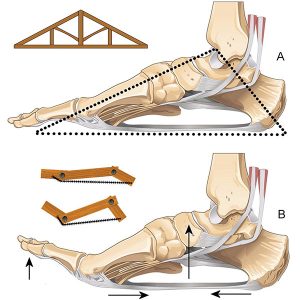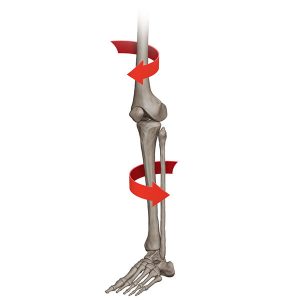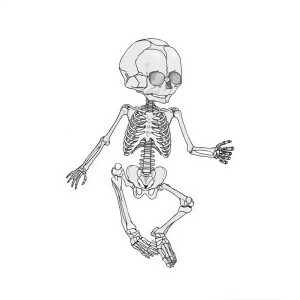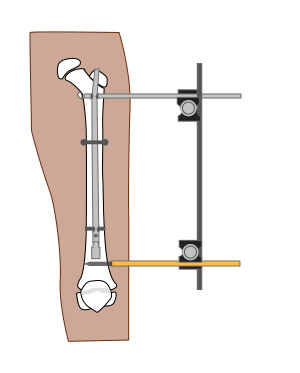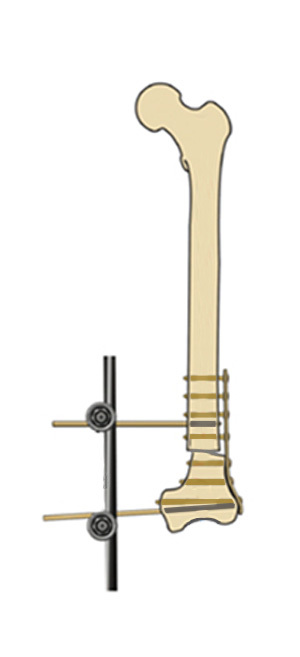Acute Deformity Correction is used to reposition the bones into normal alignment to improve function and prevent future problems with the body and joints. During this type of surgery there are two different techniques that can be used: Fixator assisted plating (FAP) or Fixator assisted Nailing (FAN). Both techniques cut the bone into two separate segments and then with the help of external fixation, the segments are placed into normal alignment (made straight). Once the correct alignment is achieved, internal fixation (a plate or nail) is then used to keep it fixed and the external fixator is removed. With Acute Deformity Correction the bony alignment is usually set during a single surgery. Patients benefit from follow up appointments that ensure proper healing of the bone and function of the surrounding joints.
Indications / Candidacy
Different types of acute deformity correction can be performed in both pediatric and adult patients. Candidates will be assessed by one of our surgical specialists to ensure a proper diagnosis and that all physical criteria are met. Patients, and in some cases their care givers, must be willing to participate in physical therapy, and attend regular appointments with their physician. Good candidates for this procedure would benefit from deformity correction as a means to improve their quality of life and physical functioning.
Good candidates for acute deformity correction procedures, typically have:
- Smaller deformities
- Deformities in which there is no risk to the neurovascular structures or soft tissues
- Single or multiplanar deformities
- Limb deformity involving a small (under 1cm) limb length discrepancy
- Usually done in patients with closed growth plates (but in some cases can be done in children)






Treated Conditions
The Canadian Limb Lengthening Center offers treatment of many complex orthopedic conditions. We pride ourselves in providing highly specialized expert care and the most up to date equipment and technologies. Using a holistic approach to acute deformity correction, we help patients treat many of the following conditions:
Surgical Technique
Results
With increased function (better walking/gait) and improved muscle strength our patients typically live very active, healthy lives after acute deformity correction. For some patients, deformity correction can decrease pain and discomfort while providing the psychological benefits of having a more positive body image and body function. The other great advantage of deformity correction is preventing premature wear and tear of the joints (due to poor limb and joint alignment). A large part of patient success relies on having a team of experienced surgeons, support staff and physical therapists that provide a comprehensive surgical program.
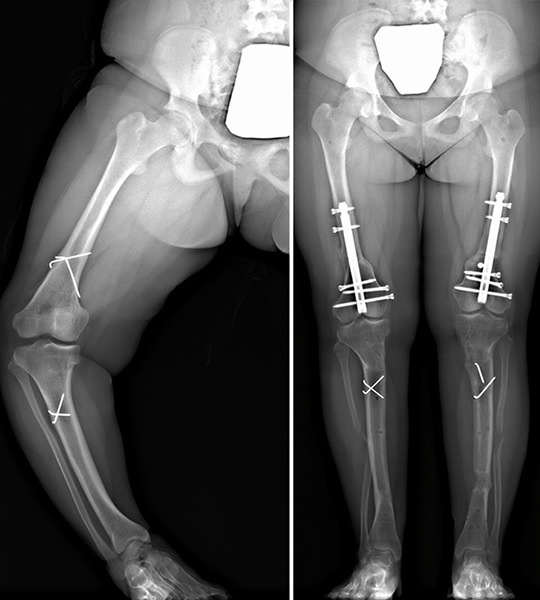
ACUTE CORRECTION WITH FIXATOR ASSISTED NAILING (FAN)
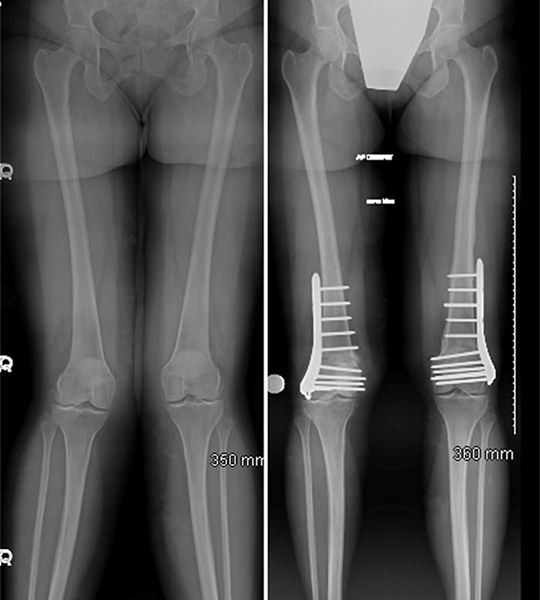
ACUTE CORRECTION WITH FIXATOR ASSISTED PLATING (FAP)
Potential Complications
As with any surgical procedure, Acute Deformity Correction can have difficulties and complications. We take extensive measures to avoid complications and have experienced specialist who know how to respond in cases where difficulties arise. Complications and side effects may include:
- Delayed union, non-union or malunion of the bone
- Superficial (skin and soft tissues) or deep infection (bone infection)
- Neurovascular injury (very rare)
- Compartment syndrome (very rare)
- Other surgery related complications that can occur but remain rare (Deep vein thrombosis, cardiac or pulmonary issues or pulmonary embolism)
Case studies
AM I A CANDIDATE?
Are you experiencing an orthopedic condition and would like to improve your physical capabilities?
Or you simply would like to achieve your long-lasting dream of improving your height?
Let us help you achieve your optimal health and wellness in a professional setting.
Let’s open up a discussion to help you achieve your goals.




Highly specialized expert care at CLLC
At the Canadian Limb Lengthening Centre we offer complex deformity correction and limb lengthening surgeries performed by experienced surgeons with the most up to date technologies. When it comes to your care, and treatment of deformity and limb length discrepancy, our surgeons have extensive training and experience.
